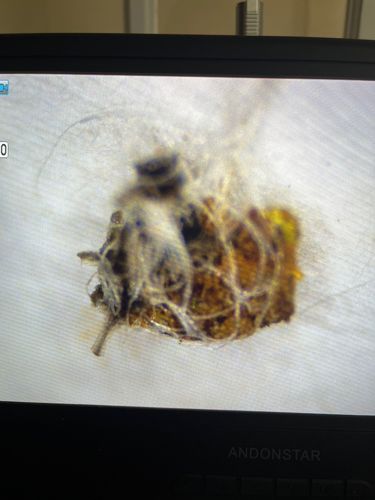Household Casebearer or Plaster Bagworm
Scientific Name: Phereoeca uterella
Order & Family: Lepidoptera, Tineidae
Size: Larvae can be up to 1/2 inch (12-13 mm) long, inhabiting a case about 1/4 to 1/2 inch (6-12 mm) long. Adult moths have a wingspan of about 1/2 inch (10-14 mm).

Natural Habitat
Commonly found indoors in homes, warehouses, and other buildings, particularly in damp or humid areas such as bathrooms, kitchens, and basements. They can also be found outdoors in sheltered, dark places.
Diet & Feeding
Larvae feed on a variety of organic materials including wool, silk, hair, pet fur, lint, dust, cobwebs, and sometimes synthetic fibers. They may also consume dead insects and spiders, or fungi and mildew.
Behavior Patterns
The most distinctive behavior is the larvae's construction and use of a portable, silken case covered with substrate particles (dust, lint, debris), which they carry with them. They move by extending their head and legs from one end of the case. They are typically slow-moving and prefer dark, undisturbed areas. Adults are small, dark moths that are weak fliers and rarely seen.
Risks & Benefits
Risks: Primarily a nuisance pest in homes. They can cause damage to natural fiber products like wool carpets, clothing, and upholstered furniture, though usually less severe than clothes moths. They are not known to bite or transmit diseases. Benefits: None significant to humans, but as detritivores, they contribute to the breakdown of organic matter.
Identified on: 9/22/2025